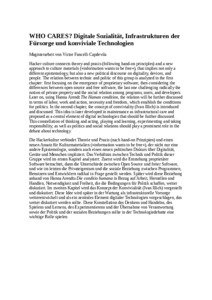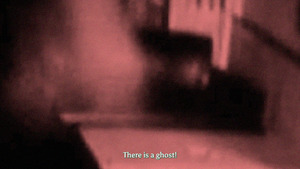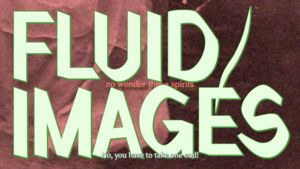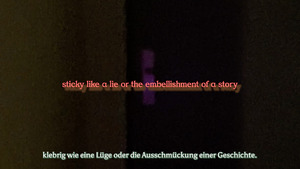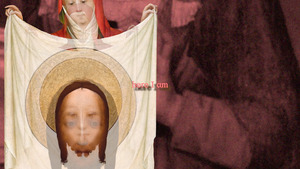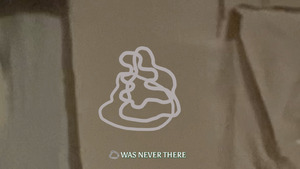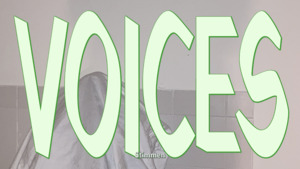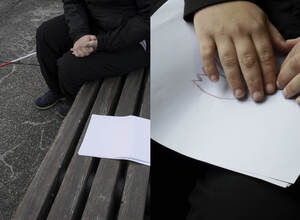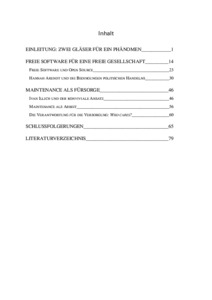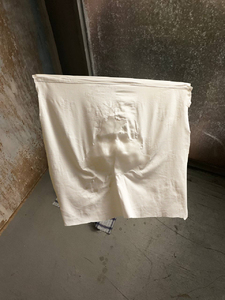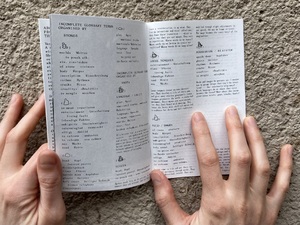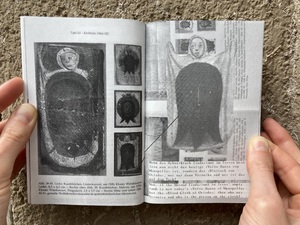"Wintersemester 2022/2023"
| Begriff | Wintersemester 2022/2023 |
| Metakey | Semester (institution:semester) |
| Typ | Keyword |
| Vokabular | HfG |
76 Inhalte
- Seite 1 von 7
Kurzbeschreibung von Who cares?
- Titel
- Kurzbeschreibung von Who cares?
- Titel (en)
- Who cares?
- Untertitel des Projekts/Werks (en)
- Digital sociality, care infrastructure and convivial technology
- Autor/in
- Beschreibung (de)
- Die Hackerkultur verbindet Theorie und Praxis (nach hand-on Prinzipien) und einen neuen Ansatz für Kulturmaterialien (»information wants to be free«), der nicht nur eine andere Epistemologie, sondern auch einen neuen politischen Diskurs über Digitalität, Geräte und Menschen impliziert. Das Verhältnis zwischen Technik und Politik dieser Gruppe wird im ersten Kapitel analysiert: Zuerst wird die Entstehung proprietärer Software betrachtet, dann die Unterschiede zwischen Open Source und freier Software, und wie im letzten die Privateigentum und die soziale Beziehung zwischen Programmen, Benutzern und Entwicklern radikal in Frage gestellt werden. Später wird diese Beziehung anhand von Hanna Arendts _Die conditio humana_ in Bezug auf Arbeit, Herstellen und Handlen, Notwendigkeit und Freiheit, die die Bedingungen für Politik schaffen, weiter diskutiert. Im zweiten Kapitel wird das Konzept der Konvivialität (Ivan Illich) vorgestellt und diskutiert. Diese Idee wird später in der Wartung als infrastrukturelle Vorsorge weiterentwickelt und als ein zentrales Element digitaler Technologien vorgeschlagen, das weiter diskutiert werden sollte. Diese Konstellation des Denkens und Handelns, des Spielens und Lernens, des Experimentierens und der Übernahme von Verantwortung sowie der Politik und der sozialen Beziehungen sollte in der Technologiedebatte eine wichtige Rolle spielen.
- Beschreibung (en)
- Hacker culture connects theory and praxis (following hand-on principles) and a new approach to culture materials (»information wants to be free«), that implies not only a different epistemology, but also a new political discourse on digitality, devices, and people. The relation between technic and politic of this group is analyzed in the first chapter: first focusing on the emergence of proprietary software; then considering the differences between open source and free software, the last one challenging radically the notion of private property and the social relation among programs, users, and developers. Later on, reading Hanna Arendts "The Human condition", the relation will be further discussed in terms of labor, work and action, necessity and freedom, which establish the conditions for politics. In the second chapter, the concept of conviviality (Ivan Illich) is introduced and discussed. This idea is later developed in maintenance as infrastructural care and proposed as a central element of digital technologies that should be further discussed. This constellation of thinking and acting, playing and learning, experimenting and taking responsibility, as well as politics and social relations should play a prominent role in the debate about technology.
- Typ des Projekts/Werks
- Schlagworte
- Datierung
- 30.09.2023
- Sprache
- Titel
- Kurzbeschreibung von Who cares?
- Titel (en)
- Project descritption of Who Cares?
- Urheberrechtshinweis
- Víctor Fancelli Capdevila
- Rechtsschutz/Lizenz
- Freigabe Nutzung HfG
- Medienersteller/in
- Beziehung/Funktion
- Medien-Beschreibung
- Zusammenfassung des Projekts Who cares?
- Projektleiter/in
- Semester
- Studiengang
- Typ der Abschlussarbeit
- Importiert am
- 02.06.2024
- Übergeordnete Sets
- 1
I used to think (dt.: Ich habe immer gedacht)
- Titel
- I used to think (dt.: Ich habe immer gedacht)
- Titel
- I used to think (dt.: Ich habe immer gedacht)
- Titel (en)
- I used to think
- Urheberrechtshinweis
- © Hanna Franke
- Rechtsschutz/Lizenz
- Freigabe Nutzung HfG
- Beziehung/Funktion
- Alternativ-Text (de)
- Verpixeltes, lachsfarbenes Foto mit unklaren, schwarzen Schatten. Am unteren Bildrand steht auf Englisch: „Da ist ein Geist!.“
- Alternativ-Text (en)
- Blurred, salmon-colored image with black shadows. At the bottom of the picture it says “There is a ghost!”.
- Projektleiter/in
- Semester
- Studiengang
- Typ der Abschlussarbeit
- Importiert am
- 31.10.2024
- Übergeordnete Sets
- 1
I used to think (dt.: Ich habe immer gedacht)
- Titel
- I used to think (dt.: Ich habe immer gedacht)
- Titel
- I used to think (dt.: Ich habe immer gedacht)
- Titel (en)
- I used to think
- Urheberrechtshinweis
- © Hanna Franke
- Rechtsschutz/Lizenz
- Freigabe Nutzung HfG
- Beziehung/Funktion
- Alternativ-Text (de)
- Über das gesamte Bild der Schriftzug „Fluid / Images“ in grün. In der Mitte des Bildes steht klein, in lachsfarbener Schrift „no wonder these spirits“. Am unteren Bildrand steht klein, in heller Schrift: „No, you have to take one end!“. Im Hintergrund ein verpixeltes, lachsfarbenes Foto.
- Alternativ-Text (en)
- The lettering "Fluid / Images" in green across the entire frame. In the middle of the picture is the text “no wonder these spirits”. At the bottom of the picture is the text “No, you have to take one end!” in light lettering. In the background is a pixelated, salmon-colored photo.
- Projektleiter/in
- Semester
- Studiengang
- Typ der Abschlussarbeit
- Importiert am
- 15.11.2024
- Übergeordnete Sets
- 1
I used to think (dt.: Ich habe immer gedacht)
- Titel
- I used to think (dt.: Ich habe immer gedacht)
- Titel
- I used to think (dt.: Ich habe immer gedacht)
- Titel (en)
- I used to think
- Urheberrechtshinweis
- © Hanna Franke
- Rechtsschutz/Lizenz
- Freigabe Nutzung HfG
- Medien-Beschreibung
- Videostill
- Alternativ-Text (de)
- Videostill: Dunkler verschwommener Hintergrund. In der Mitte des Bildes steht in lachsfarbener Schrift: „sticky like a lie or the embellishment of a story.“ Am Bildrand unten steht in heller Schrift: „klebrig wie eine Lüge oder die Ausschmückung einer Geschichte.“
- Alternativ-Text (en)
- Video still: dark, blurred background. In the middle of the picture, in salmon-colored lettering, it says: “sticky like a lie or the embellishment of a story”. At the bottom edge of the picture, in light-colored lettering, it says: “klebrig wie eine Lüge oder die Ausschmückung einer Geschichte.”
- Projektleiter/in
- Semester
- Studiengang
- Typ der Abschlussarbeit
- Importiert am
- 31.10.2024
- Übergeordnete Sets
- 1
I used to think (dt.: Ich habe immer gedacht)
- Titel
- I used to think (dt.: Ich habe immer gedacht)
- Schlagworte
- Titel
- I used to think (dt.: Ich habe immer gedacht)
- Titel (en)
- I used to think
- Urheberrechtshinweis
- © Hanna Franke
- Rechtsschutz/Lizenz
- Freigabe Nutzung HfG
- Medienersteller/in
- Beziehung/Funktion
- Alternativ-Text (de)
- Zu sehen ist ein Ausschnitt eines mittelalterlichen Gemäldes der heiligen Veronika. Die weiblich gelesene Person hält ein weißes Tuch vor sich, darauf ist ein Gesicht zu sehen. Es ist überblendet mit dem selben Ausschnitt. Auf diesem ist jedoch ein anderes Gesicht auf dem Tuch abgebildet. Mittig im Bild steht auf Englisch der Text „hier bin ich“.
- Alternativ-Text (en)
- A section of a medieval painting of St. Veronica can be seen. The female figure is holding a white cloth in front of her with a face on it. It is superimposed on the same detail. However, a different face is depicted on the cloth. In the center of the picture is the text “here I am” in English.
- Projektleiter/in
- Semester
- Studiengang
- Typ der Abschlussarbeit
- Importiert am
- 31.10.2024
- Übergeordnete Sets
- 1
I used to think (dt.: Ich habe immer gedacht)
- Titel
- I used to think (dt.: Ich habe immer gedacht)
- Titel
- I used to think (dt.: Ich habe immer gedacht)
- Titel (en)
- I used to think
- Urheberrechtshinweis
- © Hanna Franke
- Rechtsschutz/Lizenz
- Freigabe Nutzung HfG
- Medienersteller/in
- Beziehung/Funktion
- Alternativ-Text (de)
- Zu sehen sind mittig drei helle Umrissformen. Am unteren Bildrand ist eine wolkenähnliche Form, rechts daneben steht auf Englisch "war nie da". Der Hintergrund ist beige und es sind nur unklare Umrisse zu erkennen.
- Alternativ-Text (en)
- Three bright outlines can be seen in the center. At the lower edge of the picture is a light cloud-like shape, to the right of which is written “was never there”. The background is beige and only vague outlines can be seen.
- Projektleiter/in
- Semester
- Studiengang
- Typ der Abschlussarbeit
- Importiert am
- 31.10.2024
- Übergeordnete Sets
- 1
I used to think (dt.: Ich habe immer gedacht)
- Titel
- I used to think (dt.: Ich habe immer gedacht)
- Titel
- I used to think (dt.: Ich habe immer gedacht)
- Titel (en)
- I used to think
- Urheberrechtshinweis
- © Hanna Franke
- Rechtsschutz/Lizenz
- Freigabe Nutzung HfG
- Beziehung/Funktion
- Alternativ-Text (de)
- Über das gesamte Bild der Schriftzug „Voices“ in grün. Am unteren Bildrand steht klein, in heller Schrift: „Stimmen“. Im Hintergrund der Ausschnitt einer Fotografie. Darauf zu sehen ist eine weiße Wand, weiße Kacheln und ein weißes Tuch, das etwas verdeckt.
- Alternativ-Text (en)
- The words “Voices” in green across the entire picture. At the bottom of the picture, in small, light-colored letters, it says: “Voices”. In the background is a detail of a photograph. It shows a white wall, white tiles and a white cloth covering something.
- Projektleiter/in
- Semester
- Studiengang
- Typ der Abschlussarbeit
- Importiert am
- 15.11.2024
- Übergeordnete Sets
- 1
Interview mit Tastforscher Fabian K.
- Titel
- Interview mit Tastforscher Fabian K.
- Autor/in
- Kategorie
- Typ des Projekts/Werks
- Schlagworte
- Datierung
- Februar 2023
- Titel
- Interview mit Tastforscher Fabian K.
- Urheberrechtshinweis
- © Saskia van der Meer
- Freigabe Nutzung HfG
- Abgebildete Personen
- Projektleiter/in
- Semester
- Studiengang
- Typ der Abschlussarbeit
- Importiert am
- 05.10.2024
- Übergeordnete Sets
- 1
Inhaltverzeichnis - Who cares?
- Titel
- Inhaltverzeichnis - Who cares?
- Titel (en)
- Who cares?
- Untertitel des Projekts/Werks (en)
- Digital sociality, care infrastructure and convivial technology
- Autor/in
- Beschreibung (de)
- Die Hackerkultur verbindet Theorie und Praxis (nach hand-on Prinzipien) und einen neuen Ansatz für Kulturmaterialien (»information wants to be free«), der nicht nur eine andere Epistemologie, sondern auch einen neuen politischen Diskurs über Digitalität, Geräte und Menschen impliziert. Das Verhältnis zwischen Technik und Politik dieser Gruppe wird im ersten Kapitel analysiert: Zuerst wird die Entstehung proprietärer Software betrachtet, dann die Unterschiede zwischen Open Source und freier Software, und wie im letzten die Privateigentum und die soziale Beziehung zwischen Programmen, Benutzern und Entwicklern radikal in Frage gestellt werden. Später wird diese Beziehung anhand von Hanna Arendts _Die conditio humana_ in Bezug auf Arbeit, Herstellen und Handlen, Notwendigkeit und Freiheit, die die Bedingungen für Politik schaffen, weiter diskutiert. Im zweiten Kapitel wird das Konzept der Konvivialität (Ivan Illich) vorgestellt und diskutiert. Diese Idee wird später in der Wartung als infrastrukturelle Vorsorge weiterentwickelt und als ein zentrales Element digitaler Technologien vorgeschlagen, das weiter diskutiert werden sollte. Diese Konstellation des Denkens und Handelns, des Spielens und Lernens, des Experimentierens und der Übernahme von Verantwortung sowie der Politik und der sozialen Beziehungen sollte in der Technologiedebatte eine wichtige Rolle spielen.
- Beschreibung (en)
- Hacker culture connects theory and praxis (following hand-on principles) and a new approach to culture materials (»information wants to be free«), that implies not only a different epistemology, but also a new political discourse on digitality, devices, and people. The relation between technic and politic of this group is analyzed in the first chapter: first focusing on the emergence of proprietary software; then considering the differences between open source and free software, the last one challenging radically the notion of private property and the social relation among programs, users, and developers. Later on, reading Hanna Arendts "The Human condition", the relation will be further discussed in terms of labor, work and action, necessity and freedom, which establish the conditions for politics. In the second chapter, the concept of conviviality (Ivan Illich) is introduced and discussed. This idea is later developed in maintenance as infrastructural care and proposed as a central element of digital technologies that should be further discussed. This constellation of thinking and acting, playing and learning, experimenting and taking responsibility, as well as politics and social relations should play a prominent role in the debate about technology.
- Typ des Projekts/Werks
- Schlagworte
- Datierung
- 30.09.2023
- Sprache
- Titel
- Inhaltverzeichnis - Who cares?
- Titel (en)
- Index- Who Cares
- Urheberrechtshinweis
- Víctor Fancelli Capdevila
- Rechtsschutz/Lizenz
- Freigabe Nutzung HfG
- Medienersteller/in
- Beziehung/Funktion
- Medien-Beschreibung
- Inhaltverzeichnis von Who Cares?
- Medien-Beschreibung (en)
- Index of Who cares?
- Projektleiter/in
- Semester
- Studiengang
- Typ der Abschlussarbeit
- Importiert am
- 02.06.2024
- Übergeordnete Sets
- 1
face imprint (dt.: gesichtsabdruck)
- Titel
- face imprint (dt.: gesichtsabdruck)
- Schlagworte
- Titel
- face imprint (dt.: gesichtsabdruck)
- Titel (en)
- face imprint
- Urheberrechtshinweis
- © Hanna Franke
- Rechtsschutz/Lizenz
- Freigabe Nutzung HfG
- Beziehung/Funktion
- Alternativ-Text (de)
- Freigestelltes Objekt: ein heller Stoff mit einem Gesichtsabdruck aus Wachs. Im Hintergrund ist ein Teil einer Fensterscheibe und eine Holzfensterbank zu sehen.
- Alternativ-Text (en)
- Isolated object: a light-colored fabric with a wax face imprint. Part of a window pane and a wooden window sill can be seen in the background.
- Projektleiter/in
- Semester
- Studiengang
- Typ der Abschlussarbeit
- Importiert am
- 02.11.2024
- Übergeordnete Sets
- 1
everyone (dt.: alle)
- Titel
- everyone (dt.: alle)
- Schlagworte
- Titel
- everyone (dt.: alle)
- Titel (en)
- everyone
- Urheberrechtshinweis
- © Hanna Franke
- Rechtsschutz/Lizenz
- Freigabe Nutzung HfG
- Medienersteller/in
- Beziehung/Funktion
- Medien-Beschreibung
- Doppelseite des Readers zu „I used to think that I was made of Stone“.
(„everyone“, 9,5 x 15,2 cm, 36 Seiten)
- Doppelseite des Readers zu „I used to think that I was made of Stone“.
- Medien-Beschreibung (en)
- Double-page spread of the accompanying reader for “I used to think that I was made of Stone”.
(“everyone”, 9,5 x 15,2 cm, 36 pages)
- Double-page spread of the accompanying reader for “I used to think that I was made of Stone”.
- Alternativ-Text (de)
- Übersicht verschiedener Worte, kurzer Texte und Symbole. Die deutsche Übersetzung der Überschrift lautet: „Unvollständige Glossarbegriffe, sortiert nach Steinen“.
- Alternativ-Text (en)
- Overview of words, several short texts and signs. The heading says: “Incomplete Glossary Terms organised by stones”.
- Projektleiter/in
- Semester
- Studiengang
- Typ der Abschlussarbeit
- Importiert am
- 15.11.2024
- Übergeordnete Sets
- 1
everyone (dt.: alle)
- Titel
- everyone (dt.: alle)
- Schlagworte
- Titel
- everyone (dt.: alle)
- Titel (en)
- everyone
- Urheberrechtshinweis
- © Hanna Franke
- Rechtsschutz/Lizenz
- Freigabe Nutzung HfG
- Medienersteller/in
- Beziehung/Funktion
- Medien-Beschreibung
- Doppelseite des Readers zu „I used to think that I was made of Stone“.
(„everyone“, 9,5 x 15,2 cm, 36 Seiten)
- Doppelseite des Readers zu „I used to think that I was made of Stone“.
- Medien-Beschreibung (en)
- Double-page spread of the accompanying reader for “I used to think that I was made of Stone”.
(“everyone”, 9,5 x 15,2 cm, 36 pages)
- Double-page spread of the accompanying reader for “I used to think that I was made of Stone”.
- Alternativ-Text (de)
- Zwei Hände halten ein Heft vor eine Wand. Es zeigt mehrere Abbildungen in schwarz-weiß. Variationen einer Figur mit einem großen hellen Gewand, auf dem ein Gesicht abgebildet ist. Auf der rechten Seite steht unter dem vergößerten Bild der Text: "Wenn das Schweißtuch (sudarium) im leeren Grab Jesu nun nicht das heutige 'Volto Santo von Manopello' ist, sondern das 'Bluttuch von Oviedo', wer war dann Veronika und wer ist das auf dem Tuch?" auf Englisch und Deutsch.
- Alternativ-Text (en)
- Two hands holding a booklet in front of a wall. It shows several illustrations in black and white. Variations of a figure with a large light-colored robe on which a face is depicted. On the right-hand side under the enlarged image stands the text: “Now, If the Shroud (sudarium) in Jesus‘ empty tomb is not today's ’Volto Santo of Manopello‘, but the ’Blood Cloth of Oviedo', then who was Veronica and who is the person on the cloth?” in German and English.
- Projektleiter/in
- Semester
- Studiengang
- Typ der Abschlussarbeit
- Importiert am
- 15.11.2024
- Übergeordnete Sets
- 1
